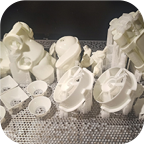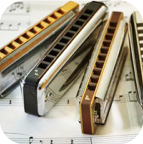Can Ultrasonic Cleaners Safely Clean Jewelry?
Browse Volume:6 Classify:Support
Walk into any modern jewelry workshop or upscale household today, and you might find a compact metal box humming quietly on a countertop. It doesn’t look like much—maybe a tank of water, a few buttons, a timer—but what it does is nothing short of transformative. This is an ultrasonic cleaner, and in recent years, it has gone from a specialized tool for labs and professionals to a favorite appliance among jewelry lovers.
The appeal lies in its promise: remove dirt, oil, and grime from even the tiniest crevices of your favorite rings, bracelets, or earrings—all without touching them. No brushes, no abrasives, and no guesswork. Just sound waves doing the work invisibly, in a bath of cleaning solution.
Consumers, especially those who wear jewelry daily, are turning to ultrasonic cleaning because of how effortless and thorough it can be. Whether it’s a wedding ring dulled by lotion and soap, or a silver necklace that’s lost its shine over time, these devices offer a convenient at-home solution that feels professional.
But as their popularity has grown, so has the confusion. Many wonder whether ultrasonic cleaners are truly good for all jewelry, or if some materials could be damaged. Others assume that any soapy liquid—like regular dishwashing detergent—will do the trick, not realizing how critical the chemistry of the cleaning solution actually is.
The truth is more nuanced. Ultrasonic cleaning is powerful—but not universally safe. Some jewelry responds beautifully to this process, while other pieces can be irreparably harmed. Understanding the balance between convenience and caution is key to making the most of these machines.
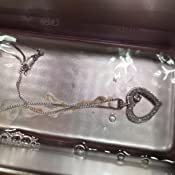
Ultrasonic cleaner with gold and silver jewelry submerged in cleaning solution
What Exactly Does an Ultrasonic Cleaner Do?
At the heart of every ultrasonic cleaner is a simple but fascinating principle: cavitation. It’s not sound that scrubs your jewelry, but the microscopic bubbles sound creates—millions of them.
Ultrasonic cleaners work by using transducers to send high-frequency sound waves (typically between 20 and 200 kHz) through a liquid medium. These sound waves produce pressure variations in the liquid, forming tiny vacuum bubbles that collapse almost instantly. This process—called cavitation—releases bursts of energy that dislodge particles from surfaces. It’s like a microscopic storm around your jewelry, lifting away dirt, oil, sweat, and oxidation from cracks and corners that are otherwise impossible to reach.
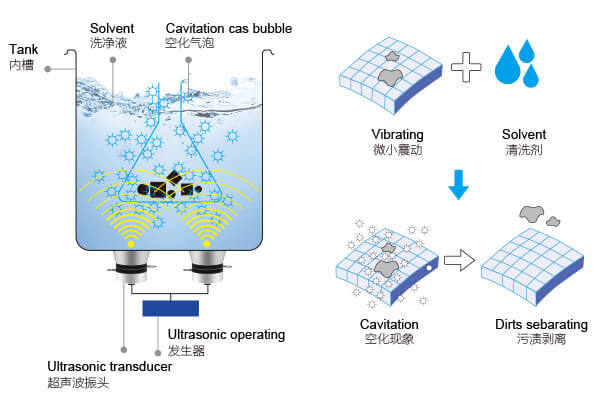
The Principle Behind Ultrasonic Cleaning
Unlike manual cleaning with brushes, cavitation doesn’t rely on physical contact. That’s what makes ultrasonic cleaning especially useful for intricate pieces like filigree earrings, chain links, or gemstone settings. There’s no risk of scratching the surface from friction, and cleaning happens uniformly across the entire submerged item.
But with all that power comes a level of precision—and risk. Cavitation is effective, but also aggressive. When used on materials that aren’t built to withstand it, or paired with incompatible cleaning solutions, it can cause damage instead of restoration.
That’s why it’s critical to understand which materials benefit from ultrasonic cleaning and which ones don’t. And just as importantly, to avoid the temptation of substituting proper ultrasonic solutions with household soaps.
What Types of Jewelry Are Safe to Clean Ultrasonically?
For many types of jewelry, ultrasonic cleaning is not only safe—it’s one of the most effective cleaning methods available. Items made entirely of solid metals like gold, silver, platinum, and stainless steel usually respond well. These materials are dense and stable, meaning they can endure the rapid vibrations and microscopic cavitation without harm.
Gold rings, especially those without fragile gemstones, are a prime candidate. They often accumulate oils and residue from skin contact, hand creams, and environmental pollutants. Ultrasonic waves can restore their shine quickly and thoroughly. Similarly, platinum and silver jewelry benefit from this method, especially when tarnish builds up in tight spaces like engraved text or chain links.
Stainless steel, although less common in fine jewelry, also does well in ultrasonic cleaners. It’s often used in fashion jewelry or men’s accessories, and it stands up to the energetic environment of ultrasonic baths with no issues.
What about diamond jewelry? Generally speaking, diamonds are safe to clean ultrasonically—but with caveats. The stone itself is hard enough to resist damage, but it’s the setting that often introduces risk. Loose prongs, invisible glue points, or micro cracks in the metal can be exposed or worsened during the cleaning process.
When considering ultrasonic cleaning for any jewelry, it’s vital to inspect for structural weaknesses first. If a stone feels loose or you’re unsure how it’s secured, the best course of action is to avoid ultrasonic cleaning until a professional jeweler evaluates the piece.
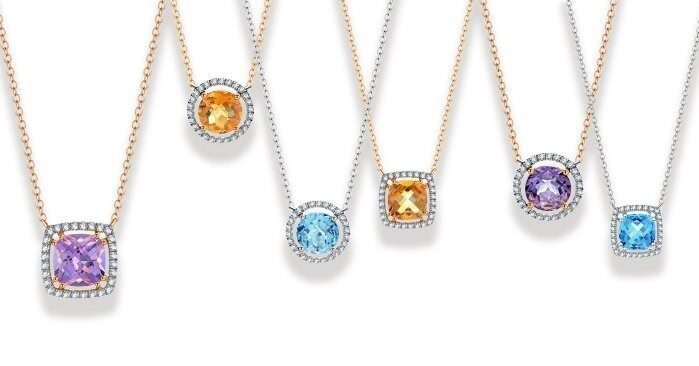
jewelry cleaner
Jewelry That Should Never Go in an Ultrasonic Cleaner
Despite the effectiveness of ultrasonic cleaning, not all jewelry can handle the process safely. In fact, some materials can suffer permanent damage within seconds of exposure.
Organic gems are particularly vulnerable. Pearls, coral, amber, and turquoise are all porous and soft. They can absorb liquid, crack under vibration, or lose their surface luster. Even a brief ultrasonic cycle can leave these stones dull or fractured. The same is true for certain semi-precious stones like opals and lapis lazuli. Their internal structures often include microfractures, which can expand or rupture due to the intense pressure changes caused by cavitation.
Another major concern is jewelry with glued-in components. Many costume jewelry pieces and even some mid-range designs use adhesives to secure stones. Ultrasonic vibration can break down the bond, leading to stones falling out—or even disappearing down the drain after cleaning.
Antique jewelry, even if it looks sturdy, often includes delicate construction methods or aged materials that aren’t compatible with modern cleaning technology. The patina, or oxidized finish, found on older silver pieces may also be stripped away unintentionally during ultrasonic cleaning.
If your jewelry includes enamel, oxidized metal, glued elements, or fragile gemstones, skip the ultrasonic cleaner altogether. Instead, use a gentle hand-cleaning method or seek professional advice.
Benefits of Using Ultrasonic Cleaners for Jewelry
The appeal of ultrasonic cleaners lies in their ability to make jewelry look brand-new with minimal effort. Unlike manual scrubbing or chemical dips, ultrasonic cleaning is fast, consistent, and non-invasive—at least when used correctly.
One of the biggest advantages is how deeply ultrasonic waves can clean. Even the smallest crevice—where a toothbrush could never reach—is subjected to uniform cavitation. This is ideal for items with complex geometry, such as mesh chains, claw settings, and intricate filigree designs. Dirt, oils, lotions, and skin particles are all removed efficiently without needing abrasive action.
Speed is another significant benefit. While soaking jewelry in a bowl of soap and water might take hours and still require brushing, ultrasonic cleaning often completes the task in 3 to 10 minutes. Some machines even offer digital timers and temperature control, letting users fine-tune their cleaning cycles based on the item’s sensitivity and condition.
Consistency is another strength. Manual cleaning depends heavily on how thorough the person is—and even then, it’s easy to miss spots. Ultrasonic cleaning provides a uniform cleaning process across all surfaces, regardless of shape or detail. It reduces human error and increases the likelihood that every part of the jewelry is restored to its cleanest form.
In commercial settings, ultrasonic cleaners are indispensable. Jewelers, watchmakers, and dental technicians all rely on this technology to clean tools and materials without damaging precision components. This speaks to the reliability and effectiveness of ultrasonic technology when it’s used in the right context, with the right cleaning solution.
However, the solution used inside the cleaner is just as important as the machine itself. If you choose the wrong liquid—like ordinary dishwashing detergent—you risk losing the very benefits ultrasonic cleaning provides.

Granbo Ultrasonic Jewelry Cleaning Effect
Risks and Potential Damage from Ultrasonic Cleaning
Ultrasonic cleaning may sound harmless because there’s no visible agitation. But beneath the surface, powerful forces are at work. Cavitation bubbles collapse with enough force to remove grime—but also to damage delicate surfaces or dislodge poorly mounted stones.
One of the most common risks is stone loosening. Prongs or settings that are even slightly worn can give way under vibration, sending gems to the bottom of the tank—or worse, out of the cleaner entirely if unnoticed. Many jewelers recommend inspecting your jewelry closely both before and after ultrasonic cleaning to catch such issues.
Some gemstones—like emeralds, tanzanite, and topaz—have internal fissures that make them especially vulnerable. When these stones are exposed to ultrasonic waves, tiny fractures can widen, or moisture can seep into them, causing clouding or cracks. Even diamonds, which are physically hard, can suffer damage if they contain inclusions or are set poorly.
Another risk involves surface finishes. Matte, brushed, antique, or oxidized metals may lose their appearance or texture after exposure to ultrasonic waves. Plated jewelry, particularly gold-plated items, is at risk of flaking or uneven wear. And costume jewelry, often made from lower-quality alloys or adhesives, may come out worse than it went in.
These risks aren’t hypothetical. Many people have shared stories online about ultrasonic cleaners damaging heirloom rings, dulling gemstones, or stripping finishes from favorite pendants. That’s why knowledge and preparation are vital before dropping any piece of jewelry into the tank.
Why Specialized Cleaning Solutions Matter
Using the right cleaning solution in your ultrasonic cleaner isn’t just a suggestion—it’s essential. The solution does more than just help loosen grime; it plays a critical role in how efficiently and safely ultrasonic waves clean jewelry. A well-formulated ultrasonic cleaning solution enhances cavitation, protects delicate surfaces, and prevents recontamination.
Specialized ultrasonic cleaning fluids are designed with a balance of surfactants, dispersants, and corrosion inhibitors. These components help break down oils, lift dirt, and suspend particles in the liquid so they don’t resettle on your jewelry. In addition, the surface tension of these solutions is optimized for maximum cavitation. That means more bubbles form and collapse with more force—without requiring aggressive chemicals or elevated heat.
On the other hand, many household soaps, including dishwashing detergents, are not designed for ultrasonic cavitation. Their formulations are optimized for manual scrubbing and foam production, not micro-bubble collapse. Foam and bubbles may look satisfying in a sink, but inside an ultrasonic tank, they act as a barrier that absorbs energy. This reduces cleaning efficiency and disrupts the ultrasonic process.
Even worse, dish soaps can leave behind residues. While this may not be noticeable on your plates, it becomes an issue on fine jewelry, especially transparent gemstones or high-polish metals. Clouding, streaking, or dulling can result—even after rinsing.
There’s also the matter of pH levels. Jewelry cleaning solutions are typically pH neutral or mildly alkaline, which is safe for metals and most gems. Some dish soaps are too acidic or too alkaline, and they can erode finishes or interact badly with certain stones. In the case of silver, the wrong solution can accelerate tarnishing instead of preventing it.
Using specialized cleaning solutions tailored for ultrasonic use ensures that the machine performs optimally, and that your jewelry gets a deep clean without unwanted side effects.
Can You Use Dish Soap Instead? Why It’s Not a Good Idea
It’s a common temptation: you have an ultrasonic cleaner, a dirty necklace, and a bottle of dish soap within reach. It seems harmless enough—but this shortcut often leads to disappointing or even damaging results.
As mentioned earlier, the formulation of dish soap is not meant for ultrasonic use. When dish soap is added to an ultrasonic tank, the foam it creates reduces cavitation efficiency. In technical terms, foam traps air, and trapped air absorbs ultrasonic waves. This leads to inconsistent cleaning results—some areas may remain dirty, while others could be overexposed.
There’s also the issue of residue. Dish soaps are engineered to be rinsed under running water. In a small ultrasonic tank, that rinse process is less vigorous. Residues from dish soap can cling to gemstones, leaving behind a cloudy finish that dulls their brilliance. If the soap contains moisturizers or fragrances (common in many brands), the problem worsens.
Worse still, dish soaps can contain ingredients that corrode metals or weaken adhesives over time. Jewelry that relies on glue settings or has mixed materials—like leather with metal—can suffer. Some dish soaps are harsh enough to cause pitting in soft metals, especially if the cleaning cycle is longer than recommended.
For occasional spot-cleaning, a tiny drop of mild, unscented dish soap in a bowl of warm water may be safe for manual use—but that’s very different from ultrasonic cleaning. The environment inside an ultrasonic tank amplifies chemical reactions, heat, and physical forces, and that means using the wrong solution isn’t just ineffective—it’s risky.
Using the right solution doesn’t have to be expensive. Many jewelry-focused ultrasonic cleaner brands sell concentrated cleaners designed specifically for metals, gemstones, or organic materials. These cleaners are often diluted with water and last for multiple uses, making them a smart and safe investment.
How to Choose the Right Ultrasonic Cleaning Solution for Jewelry
Not all jewelry is made the same, and neither are ultrasonic cleaning solutions. The type of cleaning fluid you select should match the materials in your jewelry, the level of dirt or tarnish, and the sensitivity of the piece. The wrong match could dull a stone or damage a finish, while the right choice can restore luster and brilliance safely.
The first factor to consider is metal type. For gold, platinum, and most non-oxidized silver, a general-purpose jewelry cleaning solution with a neutral or mildly alkaline pH works best. These are formulated to remove oils, dust, and fingerprints without etching the surface. For tarnished silver, choose a solution specifically designed to combat silver oxidation—typically with added anti-tarnish agents and a pH suited to silver chemistry.
If you’re cleaning gemstones, check whether they’re porous or treated. Porous stones like opals, turquoise, and pearls should never be placed in an ultrasonic cleaner, regardless of the solution. These materials can absorb liquids and may crack under the ultrasonic vibrations. Even hard stones like emeralds or sapphires can be problematic if they’ve been fracture-filled or heat-treated—treatments that may not be visible but are common in commercial jewelry.
A safe starting point is to use a manufacturer-recommended solution, especially one labeled for ultrasonic use and compatible with both metals and common gemstones. Many brands provide usage guides or dilution ratios on the label. These are not just marketing materials—they’re based on testing and chemical formulations that balance cleaning power with safety.
Avoid cleaners with strong acids, ammonia, bleach, or alcohols unless you’re cleaning unmounted industrial parts. These ingredients may be too aggressive for delicate jewelry and can corrode metal settings or cloud transparent gems. Similarly, skip anything that includes polishing agents or abrasives—they can scratch finishes or leave behind particles that interfere with ultrasonic cavitation.
And remember: dilution matters. Most ultrasonic solutions are concentrates. Adding too much doesn’t make the cleaning more effective—it just wastes product and may harm your items. Stick to the instructions, and always rinse your jewelry thoroughly after cleaning to remove any lingering residues.
Best Practices for Cleaning Jewelry in an Ultrasonic Cleaner
Even the best ultrasonic cleaner and solution won’t help if the process isn’t done correctly. Jewelry is delicate, and ultrasonic energy is powerful. That balance requires thoughtful handling to get the results you want without unintended consequences.
Start by inspecting the jewelry. Check for loose stones, worn prongs, or cracked enamel. Anything already damaged could become worse under vibration. If you find an issue, postpone ultrasonic cleaning and consult a jeweler instead.
Next, prepare the tank by filling it with the correct amount of water and adding the proper amount of ultrasonic cleaning solution. Mix gently. If your unit has a heating function, allow the water to warm to the recommended temperature—typically around 50–60°C for jewelry. Warmer water improves cavitation and loosens grime more effectively.
Place your jewelry inside a basket or mesh tray, never directly on the tank bottom. Direct contact with the ultrasonic transducers can cause pitting or scratching. Make sure pieces are not stacked or overlapping, as that can lead to uneven cleaning and potential scratching.
Keep cleaning time short and controlled. Most jewelry should only be cleaned for 2 to 5 minutes in an ultrasonic cleaner. Running cycles too long may stress delicate settings or materials. If items are particularly dirty, it’s better to run a short cycle, inspect, and repeat if necessary.
Once the cycle finishes, remove the items and rinse them thoroughly under clean water. This removes any residue from the solution. Then dry each piece gently using a soft, lint-free cloth. Let it air dry completely before storing or wearing to ensure moisture doesn’t get trapped in crevices.
Lastly, clean the tank. Drain the solution, wipe down the inside, and rinse to prevent buildup or cross-contamination with future uses.
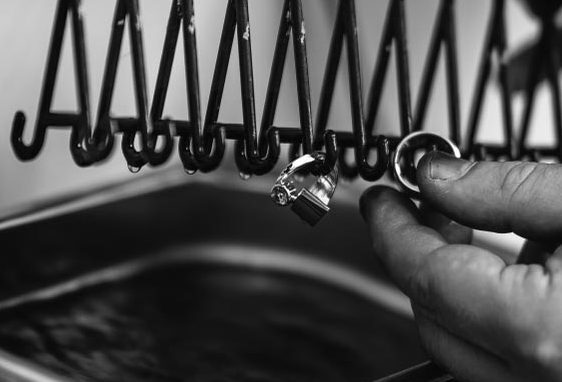
Granbo Ultrasonic Jewelry Cleaning
When Not to Use Ultrasonic Cleaners on Jewelry
Ultrasonic cleaners are incredibly effective—but they are not one-size-fits-all. While they work wonders for many types of metals and stones, certain pieces should never go near one. Knowing these exceptions can save your jewelry from irreversible damage.
Delicate gemstones are the first red flag. Porous, soft, or treated stones such as pearls, opals, turquoise, coral, lapis lazuli, amber, and malachite should always be kept out of ultrasonic tanks. These materials are structurally fragile and chemically sensitive. They may crack under vibration, absorb cleaning fluid, or lose their luster permanently. Even a short cycle can cause visible damage.
Fracture-filled or coated gemstones—especially diamonds, rubies, and emeralds—are also risky. These treatments improve appearance by filling cracks or adding surface coatings. Unfortunately, the ultrasonic waves can dislodge fillers or strip coatings, making the stone look worse than before. Since many treated stones are not labeled as such, it’s safer to avoid ultrasonic cleaning unless you’re sure of the gem’s origin.
Vintage or antique jewelry is another category to handle cautiously. Older pieces may use glue to hold stones, especially in costume jewelry. They might also have delicate solder joints or worn metal that cannot withstand ultrasonic energy. Cleaning them this way can loosen stones, damage settings, or cause internal cracks to spread. If the piece has sentimental or collectible value, opt for gentler cleaning methods.
Enamel work, glued components, and multi-material designs pose unique problems too. The high-frequency vibration can loosen adhesives, crack enamel surfaces, and separate bonded materials. If your piece combines metal with wood, leather, fabric, or plastic, it’s best to clean it manually with a soft brush and mild solution.
Finally, jewelry with loose parts or uncertain construction should be excluded. If you’re unsure about the materials, the age, or the build quality, it’s best not to risk ultrasonic cleaning. When in doubt, consult a jeweler or test on a small, inconspicuous area before attempting a full clean.
In short, ultrasonic cleaning is powerful—but that power must be used wisely. Recognizing the limits of the technology helps you protect your investment and extend the life of your favorite pieces.
Jewelry Types That Benefit Most from Ultrasonic Cleaning
Now that we’ve covered what not to clean, let’s look at the jewelry types that thrive in an ultrasonic cleaner. For the right materials and well-constructed pieces, the results are exceptional.
Solid gold and platinum jewelry are excellent candidates. These metals are durable, non-porous, and generally unaffected by ultrasonic vibrations. Rings, bracelets, earrings, and necklaces made of these materials can regain their shine in just a few minutes with the right solution.
Stainless steel and titanium also respond well to ultrasonic cleaning. These metals are used in both fine and fashion jewelry, particularly men’s designs. They resist corrosion and can handle the energetic cavitation process without issue.
Diamonds, sapphires, and rubies—if untreated—are perfect matches for ultrasonic cleaning. These stones are among the hardest on the Mohs scale and do not absorb liquids. Ultrasonic waves reach into prongs and underneath settings, clearing out dirt and oil that diminish sparkle. Just make sure your gemstones are not fracture-filled or coated.
Chains, bracelets, and intricate metalwork benefit greatly because of the ultrasonic cleaner’s ability to reach small, complex crevices that are hard to access manually. Dirt, body oils, and environmental residues often accumulate in these hard-to-clean areas. A quick ultrasonic cycle can make these pieces look showroom-ready again.
Even wedding bands or daily-wear rings—the ones that accumulate lotion, sweat, or debris—can be quickly refreshed with this method. It’s especially useful for people who wear their jewelry daily and want to maintain its appearance without harsh scrubbing.
For best results, combine the correct jewelry material with a compatible cleaning solution, limit the cleaning time, and follow all safety protocols. Done right, ultrasonic cleaning is not only effective—it’s transformative.
Is It Worth Buying an Ultrasonic Cleaner for Jewelry at Home?
Investing in an ultrasonic cleaner for home use can be a smart decision—if your jewelry collection and cleaning habits justify it. These devices are no longer limited to professional jewelers or industrial labs. Compact models designed for consumers have made the technology affordable, easy to use, and widely accessible. But is it right for your needs?
Let’s start with frequency of use. If you own several pieces of fine jewelry and wear them regularly, a home ultrasonic cleaner can save you time and money on professional cleanings. Instead of visiting a jeweler every few months, you can refresh your favorite items in minutes—restoring their shine with minimal effort.
The cost range for quality home ultrasonic cleaners varies from $40 to $200, depending on features like tank size, power settings, heating capability, and frequency modes. If you already spend that much per year on jewelry maintenance or store-bought cleaners, the device can pay for itself quickly.
Convenience is another factor. Keeping your jewelry consistently clean can help prevent buildup of body oils, lotions, and environmental debris that tarnish metals and dull stones. Having a cleaner at home encourages regular maintenance—something most people neglect when they rely solely on occasional professional care.
However, owning an ultrasonic cleaner also comes with responsibilities. You’ll need to understand which items are safe to clean, how to properly dilute solutions, and how long to run each cycle. Misuse can result in damage, especially to sensitive gemstones or vintage pieces. It’s not a plug-and-forget tool; some research and care are required.
Additionally, solution costs and machine upkeep should be factored in. While the devices are durable, cleaning solutions must be replaced or filtered regularly to maintain effectiveness. Tanks should be drained and rinsed to avoid contamination. Occasional descaling may also be necessary depending on your water source.
If you’re someone who values the appearance and longevity of your jewelry, is willing to learn basic care guidelines, and owns pieces that are well-suited for ultrasonic treatment, then yes—buying a home ultrasonic cleaner is worth it. It gives you control, consistency, and the ability to maintain your pieces without relying solely on external services.
Just make sure you approach the investment with the same respect you’d give to the jewelry itself. Read the manual. Use the right solution. Learn which items are safe—and which aren’t. Your jewelry will thank you.
Final Thoughts: Ultrasonic Cleaners and Jewelry Care
Caring for jewelry is about more than shine. It’s about preserving the integrity of materials, protecting delicate stones, and honoring the value—both financial and sentimental—of what you wear. Ultrasonic cleaners offer a high-tech solution to an age-old problem: how to clean jewelry safely, effectively, and thoroughly.
Used correctly, these machines deliver professional-level results at home. They reach into areas you can’t see, remove debris you didn’t know existed, and restore brilliance to pieces that once looked dull or tired. But the key is discernment—knowing when ultrasonic cleaning is appropriate and when it might do more harm than good.
With the right jewelry, the proper solution, and a thoughtful approach, an ultrasonic cleaner can be an excellent addition to your care routine. It won’t replace every tool in your cleaning arsenal, but it can absolutely be one of the most powerful.
For heirlooms, porous stones, or glued pieces, always err on the side of caution. Consult with a jeweler if you’re unsure. And if you decide to invest in a cleaner, take time to understand the technology. You’ll not only protect your jewelry—you’ll also get more enjoyment from wearing it every day, knowing it’s cared for properly.
 Granbo Sonic
Granbo Sonic









